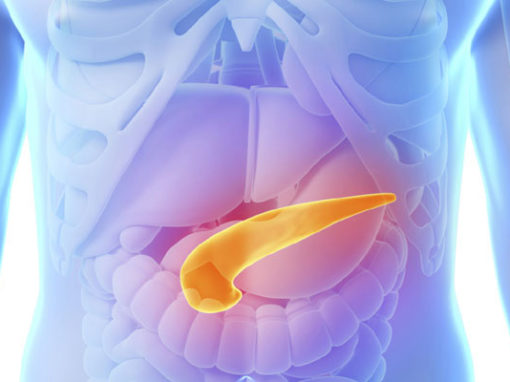Acute pancreatitis is defined as the inflammation of the pancreas. This is due to autodigestion of the pancreatic parenchyma by the pancreatic enzymes from premature activation of the trypsin leading to activation of the other pancreatic enzymes. This result in liquefactive/fat necrosis of the pancreas.
Pancreatitis can be stratified based on severity:
- Mild moderate pancreatitis (most common 75%): < 30% necrosis of pancreas
- Severe pancreatitis (25%): > 30% necrosis (also known as necrotizing pancreatitis)
Etiology and Risk factors for Acute Pancreatitis
Table of Contents
- The cause of pancreatitis can be remembered with the acronym GETSMASHED.
- Alcohol (most common in men) has been shown to make thick ductal fluid
- Uremia (patient with chronic renal failure are also at risk for pancreatitis from uremia)
- Gall stone (blocks the enzyme coming out of pancreatic duct)
- Infections by (Mumps, Coxsackie, mycoplasma) has also been shown to cause pancreatitis
- Acute Ischemia: shock, trauma, vascular thrombosis
- Drugs like (Diuretics, Didanosine, Azathioprine/6MP for IBD, Valproic acid (seziure treatment), Estrogen, Sulfa-derivative, Pentamidine) – Patient on treatment for IBD acute exacerbation can get pancreatitis.
- Hypercalcemia (increased Ca2+ activate the enzymes) also CNS disturbance if high Calcium.
- Rupture of posterior duodenal ulcer can irritate the pancreas and cause pancreatitis.
- Trauma, Hyperlipidemia (HLP)
- Cystic Fibrosis (seen in child with acute pancreatitis)
- Malignancy of Pancreas head itself can block the duct and cause pancreatitis
Sometimes people can have Vitamin A,D,E,K, B12 deficiency, steatorrhea (if Pancreatic duct is blocked), Diabetic Mellitus as end complications of acute pancreatitis when the islet cell producing insulin is damaged. Note that Vitamin A D E K absorbed in small intestine with the dietary fats.
Symptoms and Clinical Presentation:
- Epigastric abdominal pain that radiates to the back (Knife cut pain) and tender to palpation

- Nausea and vomiting, Fever can be present.
- Hemorrhagic pancreatitis signs (severe necrotizing pancreatitis)
- Cullen Sign (Blue discoloration around umbilicus known as hemoperitoneum sign)
- Turner Sign (Bluish purple discoloration if the flanks because tissue catabolism of Hb (hemoglobin) from retroperitoneum bleed)
- Fox sign (ecchymosis of inguinal ligament)
- If severe (Hypotension with acute renal failure, Septic shock, ARDS (acute respiratory distress syndrome), DIC, Leuckocytosis, Rigid abdomen). Hypotension due to increase permeability of the vessels local and systemic due to endothelial damage, vasodilation and plasma leak into the retroperitoneum.
- Fatty stool that are smelly: steatorrhea can sometimes occur (more commonly seen in Chronic pancreatitis)
Diagnosis for Acute Pancreatitis:
- Initial test done by the doctor will be the lipase and amylase from the blood that show Elevated Lipase (72-96 hrs) and Amylase (24 hours) – lipase more specific unlike amylase can be due to (acute cholecystitis, parotitis, etc)
- Most accurate for diagnosis of acute pancreatitis and its complications – CT Scan abdomen.
- Most accurate for detecting biliary and pancreatic duct pathology – ERCP /MRCP
- Abdominal US (ultrasound) – detect Gallstones as cause of pancreatitis, follow up (pseudocyst and abscess)
- Abdominal x ray – LUQ sentinel loop (dilated bowel) from tail irritation of peritoneum (ileus)
- Hypocalcemia because the enzyme are used for saponification in fat necrosis of peripancreatic fat (massive calcification process) and also malabsorption of fat which bind Ca and hence less absorbed.
- Hyperglycemia, Hemoconcentration, Leukocytosis, Metabolic acidosis
- Dystrophic calcification of the pancreas from pancreatic cell necrosis also occurs but we do not use saponification to describe the minor calcification as oppose to massive calcification (saponification) seen in fat necrosis of peripancreas fats.
- Pleural effusion
- BUN Elevation – due to decrease intravascular volume; LFT elevation if gall stone caused
- Ranson Criteria = Severity and Prognosis for debridement need with:
- Leukocytosis, BUN, AST, LDH, Elevated Glucose
- CT is more prognostic to determine severity than Ranson Criteria (developed before CT age)
- Urinary Assay of TAP (Trypsinogen activation peptide) predict severity (new test)
Complications of acute pancreatitis:
- Necrosis – can be infectious or sterile
- Extensive necrosis implies severe pancreatitis which is defined as > 30% necrosis. This needs antibiotic treatment with (Imipenem).
- Increase you chance of infection and hemorrhage-shock (lipase chew through vessel) causing Hemorrhagic Pancreatitis (turner, Cullen, fox sign)
- Pancreatic pseudocyst
- formed by fibrosis granulation tissue, surrounding liquifactive necrosis and pancreatic enzymes presenting as – Abdominal mass with persistent elevated serum amylase (2 – 4 week) can get infected, bleed, impinge neighbours, fistula etc
- DIC (Disseminated Intravascular Coagulopathy) and ARDS (acute respiratory distress syndrome):
- Pancreatic enzyme leaked into the blood can cleave Coagulating enzymes to activate them (prothrombin cleaved by trypsin), can also cleave alveolar interface leading to diffuse alveolar injury hence ARDS (high risk if necrotic infected pancreas).
- Pancreatic abscess (4 – 6 weeks) – often due to coli superinfection Ascending cholangitis – from CBD (common bile duct) obstruction
- Splenic vein thrombosis (when there is gastric varices but no esophageal varices)
Treatment and Management of Acute Pancreatitis:
- NPO, IV fluids, NG Tubes suction, Analgesia pain meds
- PPI (decrease acid to duodenum that stimulate pancreatic secretion)
- ERCP (for gall stone removal and stent placement)
- Antibiotics indicated if necrosis > 30% from CT/MRI due to increase risk for infection (imipenem/meropinem)
- Calcium and Magnesium should be replaced as appropriate.
Complications Management:
- Necrosis > 30% based on CT (replace the ranson’s criteria) implies (severe pancreatitis)
- Admit to ICU for close surveillance.
- Antibioticx indicated with imipinem and Need CT guided precutaneous aspiration biopsy for infection and if shows infected necrotic pancreatitis need Surgical debridement
- Pancreatic pseudocyst (2 – 4 weeks later) – can be infected (abscess), cause gastric outlet obstruction, hemorrhage into cyst, pancreatic ascites, fistula (pleural effusion), impinge abdomen organs or CBD (common bile duct) blockage if head of pancreas involved.
- Observe the patient pseudocyst if the size is < 5 cm, No Symptoms.
- Drain if pseudocyst is > 5 cm, Enlarging, Painful, Fistula, Ruptures